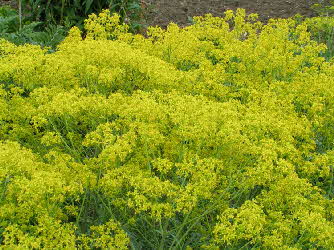|
 Woad (Isatis tinctoria) is a native of the Mediterranean and belongs to the family Cruciferae (the brassicas), as do broccoli, cabbage and rape seed. Woad (Isatis tinctoria) is a native of the Mediterranean and belongs to the family Cruciferae (the brassicas), as do broccoli, cabbage and rape seed.
The neon yellow flowers, which appear in May, have a wonderful fragrance and attract plenty of bees.
The black seeds are winged, resembling small tongues, and can produce an olive dye.
|